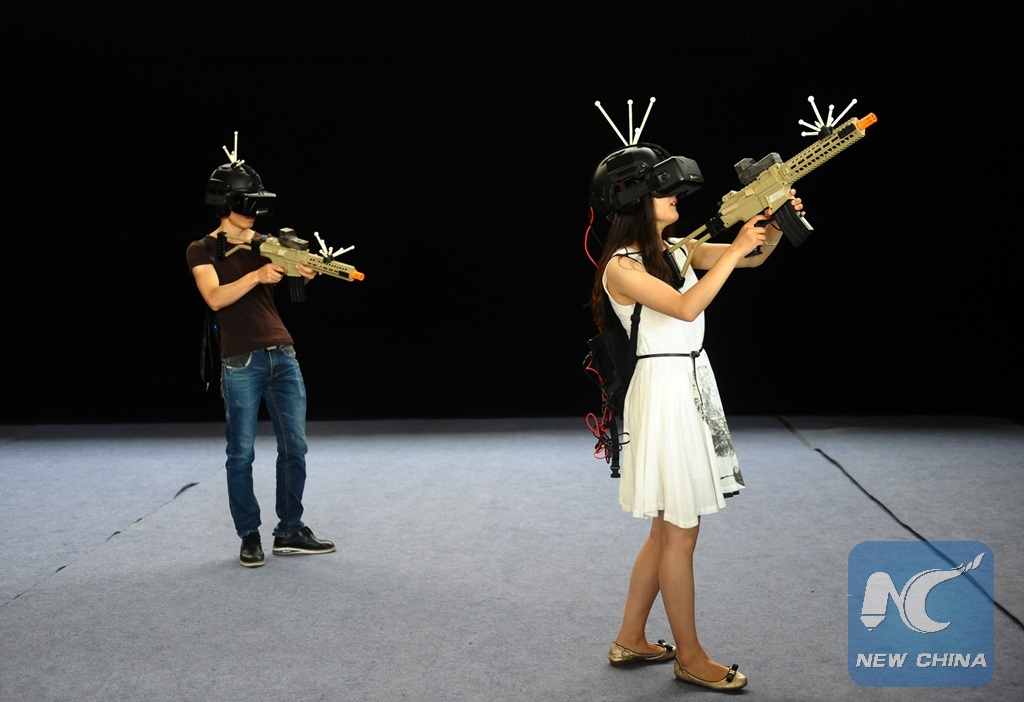
A visitor experiences a virtual reality shooting game at the virtual reality expo in Vancouver, Canada, May 14, 2016. The expo was the first of its kind held in Vancouver. (Xinhua/Liang Sen)
GUADALAJARA, Mexico, July 4 (Xinhua) -- Latin America's share of the global market for electronic games may be small, but it is set to grow at warp speed, experts have said.
Alexandre Ziebert, technical marketing manager for Santa Clara, California-based technology firm NVIDIA, said that while the region accounts for just 4 percent of the world market, over the next few years "it is expected to grow at a pace of 20 percent annually."
"This market (growth) pace that we believe will be reached in the coming years and up to 2020 is for the entire region, especially Mexico, Peru and Brazil," Ziebert told Xinhua on the sidelines of Campus Party Mexico 2016, a technology fair taking place from June 29 to July 3 in Guadalajara, the capital of Mexico's western Jalisco state.
That's why NVIDIA is staying on in Latin America, he said, "to offer more and better content" for computer games, virtual reality (VR), video games and more.
Figures show 80 percent of the game players in the region play games on their PCs or mobile phones, spending up to three hours a week playing on their devices, he added.

People experience a virtual reality game during the 12th China Changchun International Animation Art Fair in Changchun, capital of northeast China's Jilin Province, June 13, 2016. Virtual reality equipments in the theme of games and movies attracted many visitors at the fair. (Xinhua/Lin Hong)
2016 has been a big year for VR, according to many industry observers.
Facebook, for example, launched its Oculus VR goggles and Surround 360, its 3D video capture system, while Google unveiled Daydream.
It's not just companies that stand to benefit from Latin America's growing appetite for gaming, said Mexican-born Daniel Rodil, developer of Playstation's popular Murasaki Mist video game.
Countries like Mexico could tap into the demand to develop their own gaming industries, generating revenue and jobs in the process.
"Unfortunately, they don't take the industry seriously, so they don't earmark educational resources to train youth in developing video games, which in turn would lead to the creation of companies, jobs and significant earnings," said Rodil, who is also head of Hollow Games.
The talent is there, he said, but without adequate investment, countries such as Japan, the United States, India and China will continue to gain ground, while Mexico lags behind.
According to The Competitive Intelligence Unit, a Mexico City-based consulting firm, Mexico's video games market generated almost 20 billion pesos (about 1 billion U.S. dollars) in 2015, a nearly 7-percent increase over the previous year.

